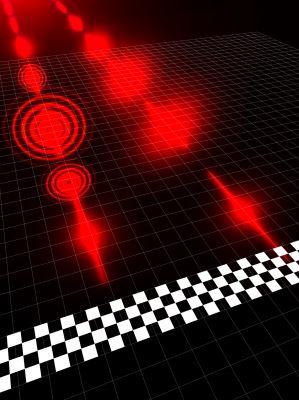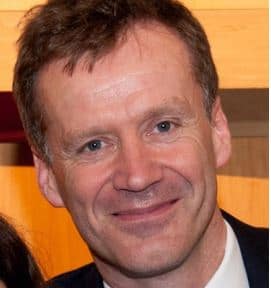Scientists from the University of Glasgow and Heriot-Watt University said they managed to slow down light in free space for the first time. Their study findings have been published in Science Express (citation below).
We have long known that the speed of light can be reduced marginally as it travels through water or glass, but not through free space.
In this latest study, scientists showed that applying a mask to an optical beam to give photons a spatial structure can slow them down. Photons are tiny light particles, too small for the naked eye to see (all light is made of photons).
They set up their experiment like a horserace, with two photons released at the same time across identical distances towards a finish line.
The authors compared the photons in a beam of light to a team of cyclist. The cyclists share the work by swapping positions – although they travel along a road as a unit, the speed of each athlete varies as they change positions.

The optical beam with the mask applied to it (left) reached the finishing line later. (Image: University of Glasgow)
Just as the group formation can make it hard to determine a single speed for all cyclists, the same applies to light. A single pulse of light consists of many photons which travel at varying speeds.
In their two-photon race, the researchers found that one reached the finish line as they had predicted, but the structured photon, which had been reshaped by the mask, arrived later, hence, it must have been travelling more slowly in free space.
They measured a slowing of up to 20 wavelengths over a distance of one meter, which is many times greater than the measurement precision.
The study showed that after passing the light beam through a mask, the photons slowed down through space.
Crucially, this is quite different to the decelerating effect of passing a beam of light through water or glass, where light travels more slowly during the time it is passing through the material. In such case, the photons return to normal light speed after they come out the other side.

The study was performed by a team led by Professor Miles Padget (pictured above) from the University of Glasgow’s Optics Group, working together with Stephen Barnett, a theoretical physicist, and in partnership with Danielle Faccio from Heriot-Watt University in Edingurgh. (Image: University of Glasgow)
When passing the light through the mask, the top speed at which the photons can travel is limited.
One of the lead authors of the paper, Daniel Giovannini, said:
“The delay we’ve introduced to the structured beam is small, measured at several micrometres over a propagation distance of one metre, but it is significant. We’ve measured similar effects in two different types of beams known as Bessel beams and Gaussian beams.”
Jacquiline Romero, a co-lead author, said:
“We’ve achieved this slowing effect with some subtle but widely-known optical principles. This finding shows unambiguously that the propagation of light can be slowed below the commonly accepted figure of 299,792,458 metres per second, even when travelling in air or vacuum.”
“Although we measure the effect for a single photon, it applies to bright light beams too. The effect is biggest when the lenses used to create the beam are large and when the distance over which the light is focused is small, meaning the effect only applies at short range.”
Professor Padgett said:
“It might seem surprising that light can be made to travel more slowly like this, but the effect has a solid theoretical foundation and we’re confident that our observations are correct.”
“The results give us a new way to think about the properties of light and we’re keen to continue exploring the potential of this discovery in future applications. We expect that the effect will be applicable to any wave theory, so a similar slowing could well be created in sound waves, for example.”
Citation: “Spatially structured photons that travel in free space slower than the speed of light,” Daniel Giovannini, Jacquiline Romero, Václav Potoček, Gergely Ferenczi, Fiona Speirits, Stephen M. Barnett, Daniele Faccio, and Miles J. Padgett. Science aaa 3035. Published online 22 January, 2015. DOI:10.1126/science.aaa3035. (Science Express provides electronic publication of selected papers in advance of print).
